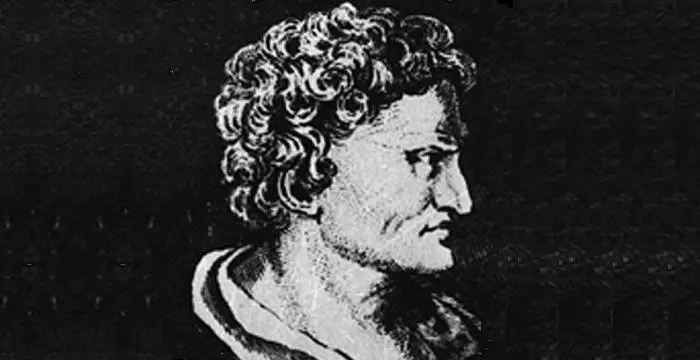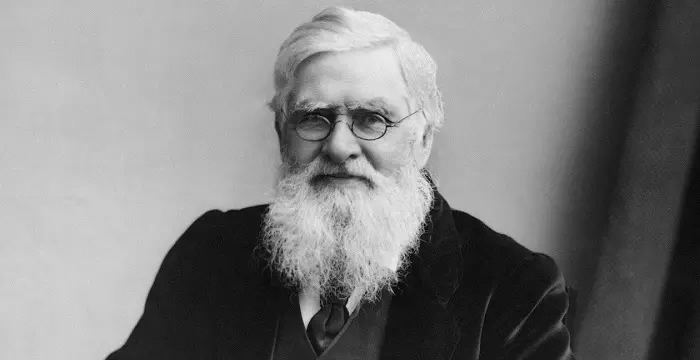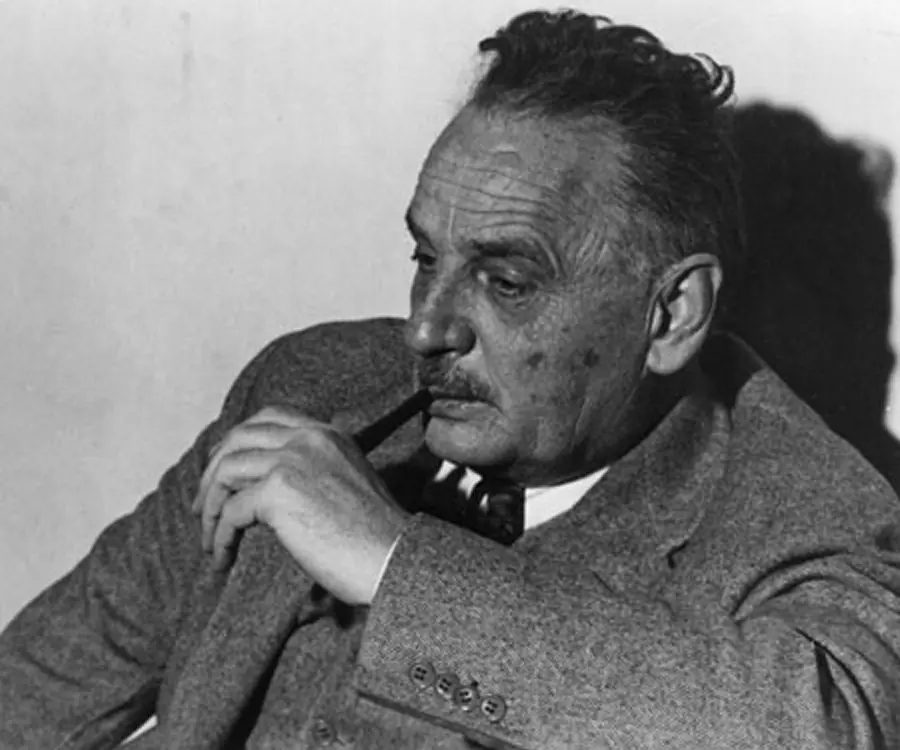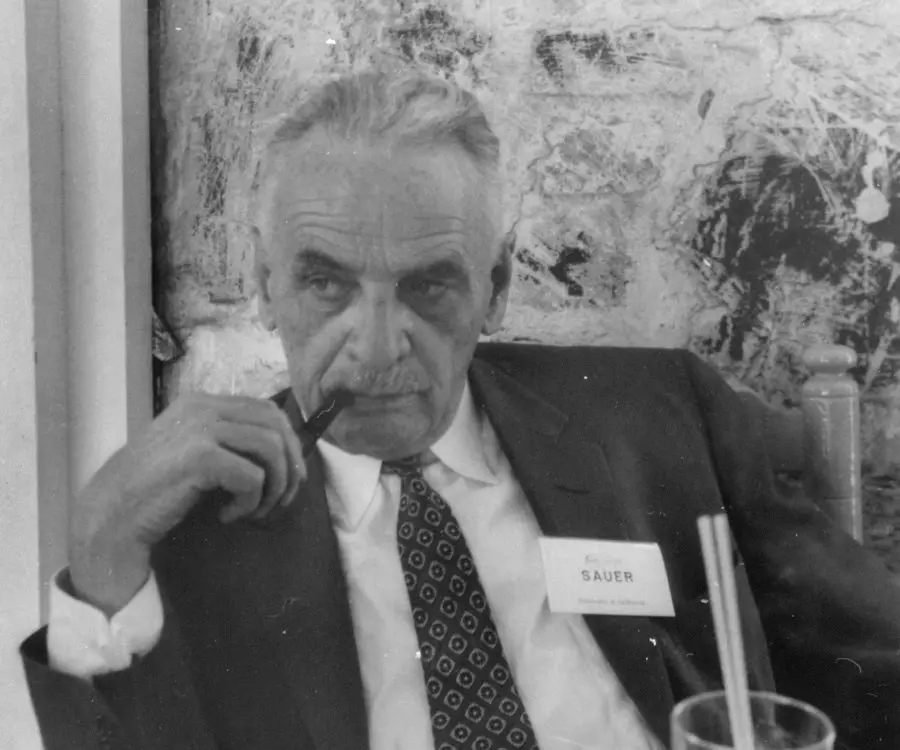
Carl O. Sauer - Intellectuals & Academics, Career and Childhood
Carl O. Sauer's Personal Details
Carl Ortwin Sauer was one of the most prominent geographers in America during the twentieth century
| Information | Detail |
|---|---|
| Birthday | December 24, 1889 |
| Died on | July 18, 1975 |
| Nationality | American |
| Famous | Intellectuals & Academics, Geographers |
| Spouses | Laura Lorena Schowengerdt |
| Known as | Carl Ortwin Sauer |
| Childrens | Jonathan |
| Birth Place | Warrenton, Missouri, US |
| Gender | Male |
| Father | William Albert Sauer |
| Mother | Rosetta Johanna Hall |
| Sun Sign | Capricorn |
| Born in | Warrenton, Missouri, US |
| Famous as | Geographer |
| Died at Age | 85 |
// Famous Geographers
Jabir Ibn Hayyan
Jabir Ibn Hayyan was a medieval era polymath. Check out this biography to know about his life, works and achievements.
Hipparchus
Hipparchus was a Greek astronomer and mathematician. This biography profiles his childhood, life, achievements and timeline.
Alfred Russel Wallace
Alfred Russel Wallace was a British scientist and explorer, best known for discovering the concept of evolution by natural selection. This biography of Alfred Wallace provides information about his childhood, life, achievements, works & timeline.
Carl O. Sauer's photo
Who is Carl O. Sauer?
Carl Ortwin Sauer was one of the most prominent geographers in America during the twentieth century. He was an advocate of the effect of human intervention in the formation of the landscape, cultures, societies, history and environment of various areas around the globe especially Latin America and less industrialized zones of North America. He was a fierce critic of environmental determinism though he had been a teacher of the subject at one point of time. He focused on the diffusion of animals and plants and the impact on the geography due to the conquest of the indigenous people in North America, the Red Indians, by the whites. He was extremely critical of the government for not providing any policy that could bring about a sustainable use of land and its resources. He started a new school of thought that the geography of an area is more dependent on the humans who have changed it rather than nature. He introduced the term ‘landscape’ into American geography which could be a ‘natural landscape’ or a ‘cultural landscape’. He suggested that landscape is a viable alternative to environmental determinism which describes the casual influence of the environment on humans, whereas, the landscape approach studies the impact of humans on the environment. In his opinion geography is ‘cultural landscape’ rather than ‘natural landscape’.
// Famous Intellectuals & Academics
Bertil Gotthard Ohlin
Bertil Gotthard Ohlin was a famous Swedish economist. This biography profiles his childhood, family life & achievements.
Emily Greene Balch
Emily Greene Balch was an American economist, sociologist and pacifist who won the 1946 Nobel Peace Prize. This biography of Emily Greene Balch provides detailed information about her childhood, life, achievements, works & timeline.
Martin Buber
One of the greatest philosophers to have ever walked on earth, Martin Buber contributions to philosophy is a long-standing one. Explore all about his profile, childhood, life and timeline here.
Childhood & Early Life
Carl O. Sauer was born in Warrenton, Missouri, on December 24, 1889. His father was William Albert Sauer, a German immigrant and a teacher in a German Methodist college named ‘Central Wesleyan College’ which is now defunct, and his mother was Rosetta Johanna Hall, also a German immigrant.
He did his initial schooling from a school in Calur, Wurtemberg in Germany.
He returned to the United States and joined ‘Central Wesleyan College’ from where he graduated in 1908 shortly before turning nineteen.
He joined the ‘Northwestern University’ in Evanston, Illinois to study geology from 1909 to 1909 where he became interested in past history.
He shifted over to geography and studied the cultural activities and the physical landscape of the past.
He joined the ‘University of Chicago’ later and studied under various professors such as Rollin D. Salisbury and others. He received his PhD in geography from this university in 1915.
Career
Carl Sauer worked as an instructor in physical sciences at the ‘State Normal School’ at Salem, Massachusetts from 1913 to 1914.
He joined the ‘University of Michigan’ at Ann Arbor as an instructor in the newly formed department of geology and geography in 1915 and became an Assistant Professor in 1918, an Associate Professor in 1920, a Professor in 1920 and the Chairman of the department in 1923.
He taught environmental determinism, a part of geography, which stressed that the development of societies and cultures depended solely upon the physical environment.
While studying the reasons behind the destruction of the pine forests in the Lower Peninsula of Michigan, he became convinced that humans control nature which determines the development of their cultures and not the way he believed till then. It was just opposite to what he had been teaching in environmental determinism and he became a fierce critic of the subject for the rest of his life.
In 1923 he joined the ‘University of California, Berkeley’ as a Professor and the Chairman of the department of geography. Here he developed the ‘Berkeley School of Geographic Thought’ which related the geography of a region to its landscape, history and culture. He held this position from 1923 to 1954.
He also was instrumental in aligning the geography department at the university with its anthropology and history departments.
While working at the U. C. Berkeley, he brought out his most famous paper ‘The Morphology of Landscape’ in 1925 that challenged the idea of environmental determinism and stressed on the fact that people and natural processes were actually responsible for the change in the landscape and geography of a certain area.
During the 1920s Sauer studied the landscape of Mexico which was the beginning of his life-long interest in the historical geography and the cultures in Latin America.
During the 1930s he worked with the ‘National Land Use Committee’ to study the relationship between soil, climate and landscape. He worked with one of his graduate students named Charles Warren Thornthwaite at the ‘Soil Erosion Service’ on soil erosion.
He published a series of essays in 1938 on economic and environmental issues which were critical of the government for its inability to bring economic and agricultural reform which would be sustainable.
He earned national recognition with his involvement in the design of the ‘Michigan Land Economic Survey’.
He played an important part in the establishment of the ‘US Soil Conservation Service’ and the design of the land-use mapping service in the United States.
He became a consultant to the ‘President’s Science Advisory Board’ during the 1930s.
During the 1930s he also became interested in biogeography and wrote many articles on animal and plant domestication.
In 1955 he organized an international conference on ‘Man's Role in Changing the Face of the Earth’ at Pricenton, New Jersey, which discussed the impact created by humans on the organisms, water, landscape and atmosphere.
He also served as a member of the selection committee in the ‘John Simon Guggenheim Memorial Foundation’ and oversaw the issue of American scholarships.
He became the President of the ‘Association of American Geographers in 1940 and was appointed an honorary president in 1955.
He retired from active teaching in 1957 but carried on with his research work. He was a ‘Professor Emeritus’ from 1957 till his death.
Major Works
One of the major works of Carl O. Sauer was ‘The Morphology of Landscape’ which was published in 1925 where he introduced the concept of ‘landscape’ in geography. ‘The Road to Cibola. Berkeley and Los Angeles’ was published in 1932 while ‘Aboriginal Population of Northwestern Mexico’ was published in 1935.
His book ‘Destructive Exploitation in Modern Colonial Expansion’ was published in 1938 while ‘Agricultural Origins and Dispersals’ about the domestication of plants and animals was published in 1952.
Awards & Achievements
Carl O. Sauer received the ‘Charles P. Daly Medal’ from the ‘American Geographical Society’ in 1940.
He received the ‘Vega Medal’ from the ‘Swedish Society for Anthropology and Geography’ in 1957.
He received the ‘Victoria Medal’ from the ‘Royal Geographical Society’ in 1975.
He received a medal from the ‘Berlin Geographical Society’ also.
Sauer received four honorary doctorates which included degrees from the ‘Syracruse University, the ‘Heidelberg University’ and the ‘University of California’.
He received an ‘Honorary Fellowship’ from the ‘American geographical Society’ in 1935.
Almost fifty doctoral students studied under him during his entire career at the ‘University of California, Berkeley’.
Personal Life & Legacy
He married Laura Lorena Schowengerdt and had a son named Jonathan and a daughter named Elizabeth from the marriage.
Carl O. Sauer died at the age of 85 in Berkeley, California, USA on July 18, 1975.
// Famous Capricorn Celebrities peoples
Weston Koury
All about American social media star Weston Koury, including his age, family life, girlfriends, birthday, and some fun facts.
Elin Nordegren
Elin Nordegren is the ex-wife of Tiger Woods. Check out this biography to know about her childhood, family life, achievements and fun facts about her life.
ItsJustNick
ItsJustNick is a Canadian YouTube star & social media personality. Let’s take a look at his family and personal life including age, date of birth, net worth, girlfriends, and fun facts.
Carl O. Sauer biography timelines
- // 24th Dec 1889Carl O. Sauer was born in Warrenton, Missouri, on December 24, 1889. His father was William Albert Sauer, a German immigrant and a teacher in a German Methodist college named ‘Central Wesleyan College’ which is now defunct, and his mother was Rosetta Johanna Hall, also a German immigrant.
- // 1908He returned to the United States and joined ‘Central Wesleyan College’ from where he graduated in 1908 shortly before turning nineteen.
- // 1909 To 1909He joined the ‘Northwestern University’ in Evanston, Illinois to study geology from 1909 to 1909 where he became interested in past history.
- // 1913 To 1914Carl Sauer worked as an instructor in physical sciences at the ‘State Normal School’ at Salem, Massachusetts from 1913 to 1914.
- // 1915He joined the ‘University of Chicago’ later and studied under various professors such as Rollin D. Salisbury and others. He received his PhD in geography from this university in 1915.
- // 1925While working at the U. C. Berkeley, he brought out his most famous paper ‘The Morphology of Landscape’ in 1925 that challenged the idea of environmental determinism and stressed on the fact that people and natural processes were actually responsible for the change in the landscape and geography of a certain area.
- // 1935He received an ‘Honorary Fellowship’ from the ‘American geographical Society’ in 1935.
- // 1938He published a series of essays in 1938 on economic and environmental issues which were critical of the government for its inability to bring economic and agricultural reform which would be sustainable.
- // 1938 To 1952His book ‘Destructive Exploitation in Modern Colonial Expansion’ was published in 1938 while ‘Agricultural Origins and Dispersals’ about the domestication of plants and animals was published in 1952.
- // 1940 To 1955He became the President of the ‘Association of American Geographers in 1940 and was appointed an honorary president in 1955.
- // 1940Carl O. Sauer received the ‘Charles P. Daly Medal’ from the ‘American Geographical Society’ in 1940.
- // 1955In 1955 he organized an international conference on ‘Man's Role in Changing the Face of the Earth’ at Pricenton, New Jersey, which discussed the impact created by humans on the organisms, water, landscape and atmosphere.
- // 1957He retired from active teaching in 1957 but carried on with his research work. He was a ‘Professor Emeritus’ from 1957 till his death.
- // 1957He received the ‘Vega Medal’ from the ‘Swedish Society for Anthropology and Geography’ in 1957.
- // 1975He received the ‘Victoria Medal’ from the ‘Royal Geographical Society’ in 1975.
- // 18th Jul 1975Carl O. Sauer died at the age of 85 in Berkeley, California, USA on July 18, 1975.
// Famous American peoples
Wentworth Miller
Wentworth Miller is an American actor and screenwriter who achieved recognition for his role in the TV series ‘Prison Break’.
Jason Simpson
Jason Simpson is the son of former NFL running back, broadcaster and actor O. J. Simpson. Check out this biography to know about his childhood, family, life, and little known facts about him.
Melissa Brim
Melissa Brim is the ex-girlfriend of former professional boxer Floyd Mayweather Jr. Check out this biography to know about her birthday, childhood, family life, achievements and fun facts about her.
Skai Jackson
Skai Jackson is an American child actress with huge fan following. Find more about her family & personal life, relationships, facts and more.
Joyce Meyer
Joyce Meyer is a Christian author and speaker. This biography provides detailed information about her childhood, life, achievements, works & timeline
Zoe LaVerne
Zoe LaVerne is an American musical.ly star. Check out this biography to know more about her family, personal life, including her age, birthday, etc.
Carl O. Sauer's FAQ
What is Carl O. Sauer birthday?
Carl O. Sauer was born at 1889-12-24
When was Carl O. Sauer died?
Carl O. Sauer was died at 1975-07-18
Which age was Carl O. Sauer died?
Carl O. Sauer was died at age 85
Where is Carl O. Sauer's birth place?
Carl O. Sauer was born in Warrenton, Missouri, US
What is Carl O. Sauer nationalities?
Carl O. Sauer's nationalities is American
Who is Carl O. Sauer spouses?
Carl O. Sauer's spouses is Laura Lorena Schowengerdt
Who is Carl O. Sauer childrens?
Carl O. Sauer's childrens is Jonathan
Who is Carl O. Sauer's father?
Carl O. Sauer's father is William Albert Sauer
Who is Carl O. Sauer's mother?
Carl O. Sauer's mother is Rosetta Johanna Hall
What is Carl O. Sauer's sun sign?
Carl O. Sauer is Capricorn
How famous is Carl O. Sauer?
Carl O. Sauer is famouse as Geographer
















